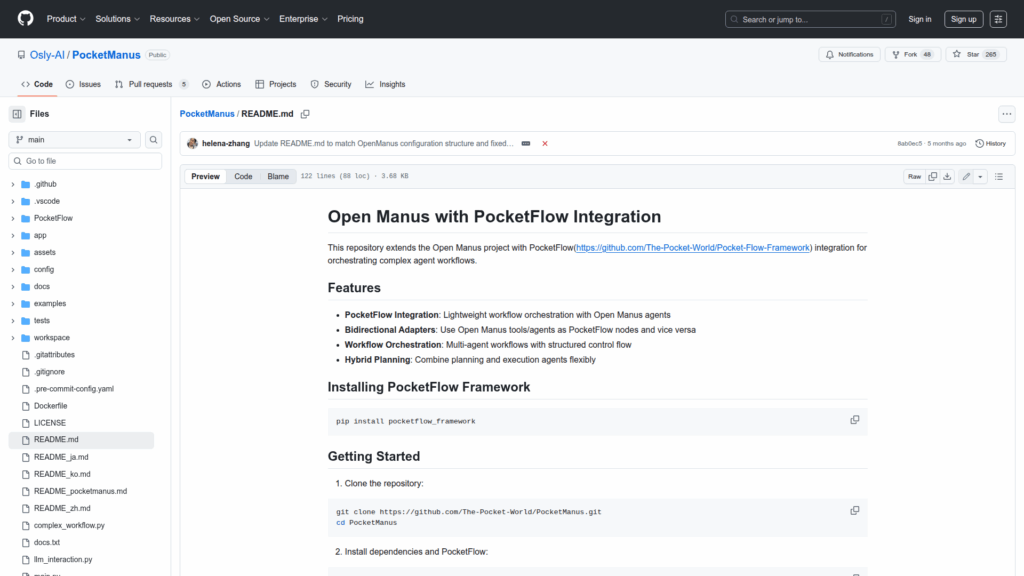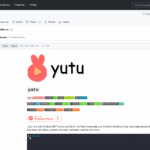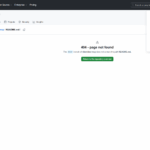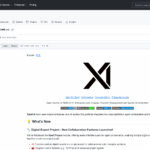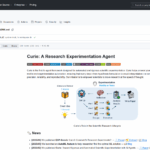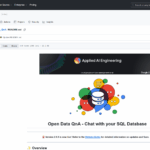PocketManus
Basic Information
This repository integrates the Open Manus agent architecture with the PocketFlow lightweight workflow orchestration framework to enable building, composing, and running complex multi-agent workflows. It provides adapters so Open Manus agents and tools can be used as PocketFlow nodes and so PocketFlow nodes can be treated as Open Manus components. The project includes an orchestrator and a flow factory to create sequential, parallel, conditional and hybrid planning/execution flows. It is intended for developers who want to assemble, configure, and execute multi-agent pipelines, run RAG-style retrieval workflows, and experiment with planning and parallel execution patterns using configurable LLM settings in a local project setup.
Links
Stars
240
Language
Github Repository
App Details
Features
PocketFlow integration that maps Open Manus components to node-based PocketFlow flows. Bidirectional adapters that allow agents and tools to be reused across both systems. A central WorkflowOrchestrator API to register agents, create agent workflows, and run them programmatically. Flow Factory for generating common flow patterns including planning, hybrid planning/execution, and parallel execution. Example workflows and scripts such as run_fixed_pocketflow.py demonstrating multi_agent, planning_parallel, and rag workflows. Configuration driven setup via config/config.toml with global LLM and vision model settings. Dependency guidance and installation steps referencing pocketflow_framework and requirements installation.
Use Cases
PocketManus reduces the engineering effort required to orchestrate multiple LLM-based agents by providing reusable orchestration primitives and adapters. Developers can register planners, executors, and custom agents, then compose them into named workflows to run tasks like research summaries, code generation, or RAG queries. The included examples and scripts accelerate onboarding and testing, while the configuration file centralizes LLM and vision model settings and API keys. Support for sequential, parallel, and conditional flows plus hybrid planning patterns lets teams prototype coordination strategies and scale agent interactions without building orchestration infrastructure from scratch.

